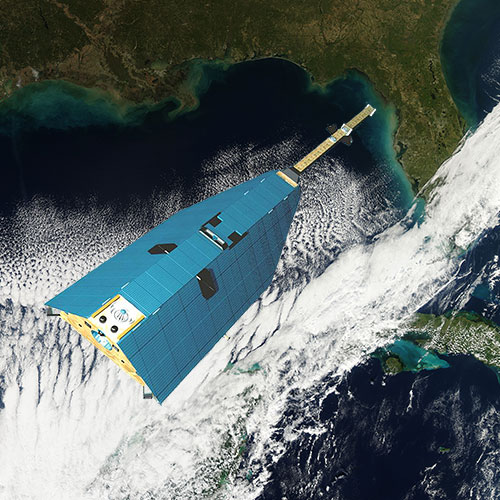CHAMP (satellite)
CHAMP ( CHAllenging Mini Payload ) was a German small satellite, which was launched on July 15, 2000 by a Cosmos rocket from Plesetsk into a polar near 454 km high orbit.
The satellite had a mass of 522 kg and was 8.33 m long ( 4.04 m which the arm for magnetic field sensors ) and was originally designed for a lifetime of five years. On September 19, 2010 - after more than twice the actual mission time - CHAMP burned up in a controlled re-entry into Earth's atmosphere.
CHAMP surveyed the magnetic and gravity field of the earth and gathered accurate information on global temperature and water vapor distributions. These were determined with the innovative GPS Radiookkultationsmethode for Atmospheric Remote Sensing. The geomagnetic field sparked CHAMP on with an accuracy of about 0.5 nano Tesla. For comparison, the magnetic field on the Earth's surface is about 30 μT. The gravity field detected the satellite with a precision of about 0.0005 microns / s ², corresponding to a detectable height variation of 1 mm. For comparison, the acceleration due to gravity on the surface is about 10 m / s ². The spatial resolution is between 100 and 200 km.
The GFZ Potsdam led the CHAMP mission. Other project partners were:
- Jena- Optronic ( construction of the satellite with Astrium Friedrichshafen and Rostock)
- COSMOS International satellite launch (start)
- DLR Oberpfaffenhofen ( satellite control )
Partners who participated with payloads:
- NASA, JPL ( GPS receiver )
- CNES, ONERA (accelerometer )
- AFRL, USAF ( Digital Ion Drift Meter, DIDM, and Langmuir probe)
- Technical University of Denmark ( star sensors )










